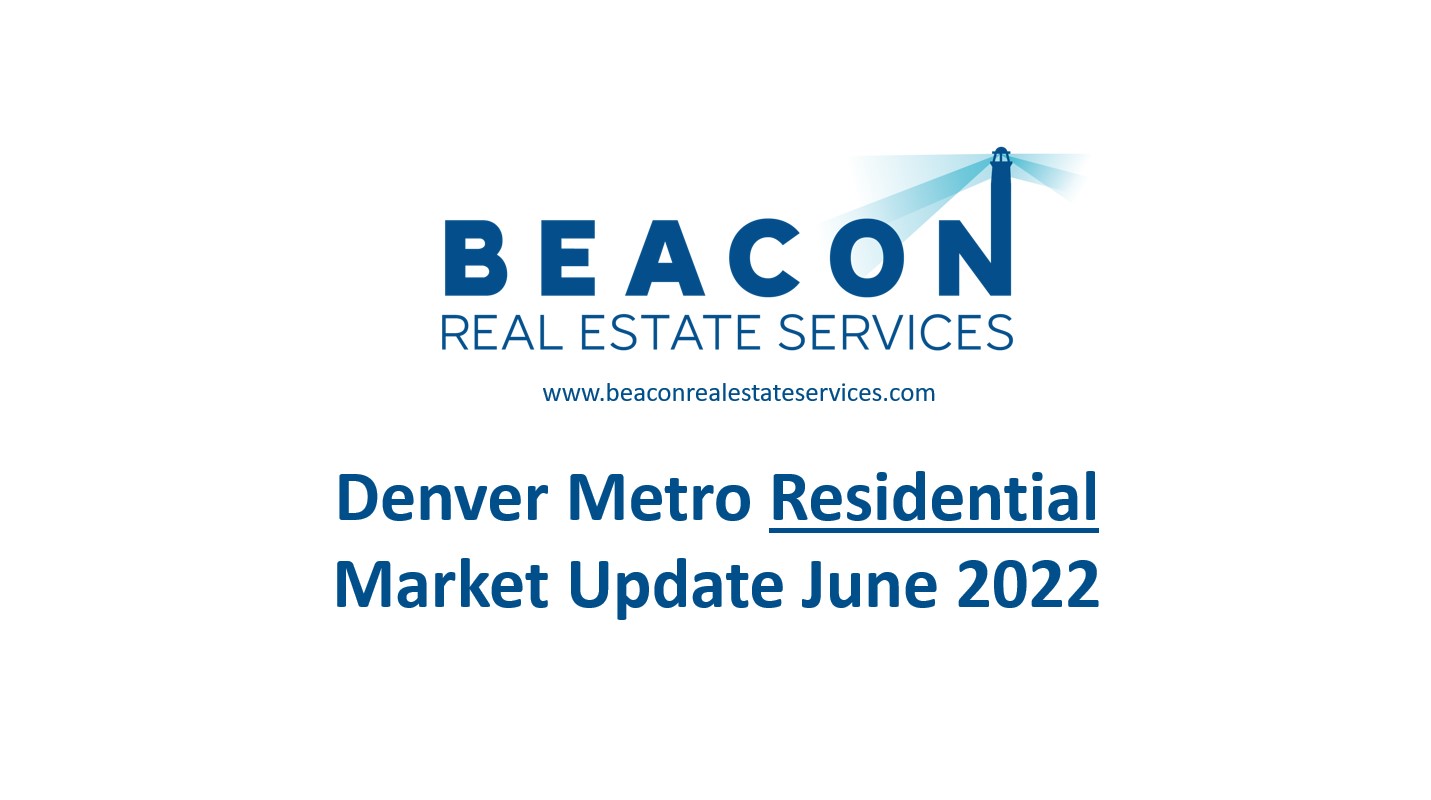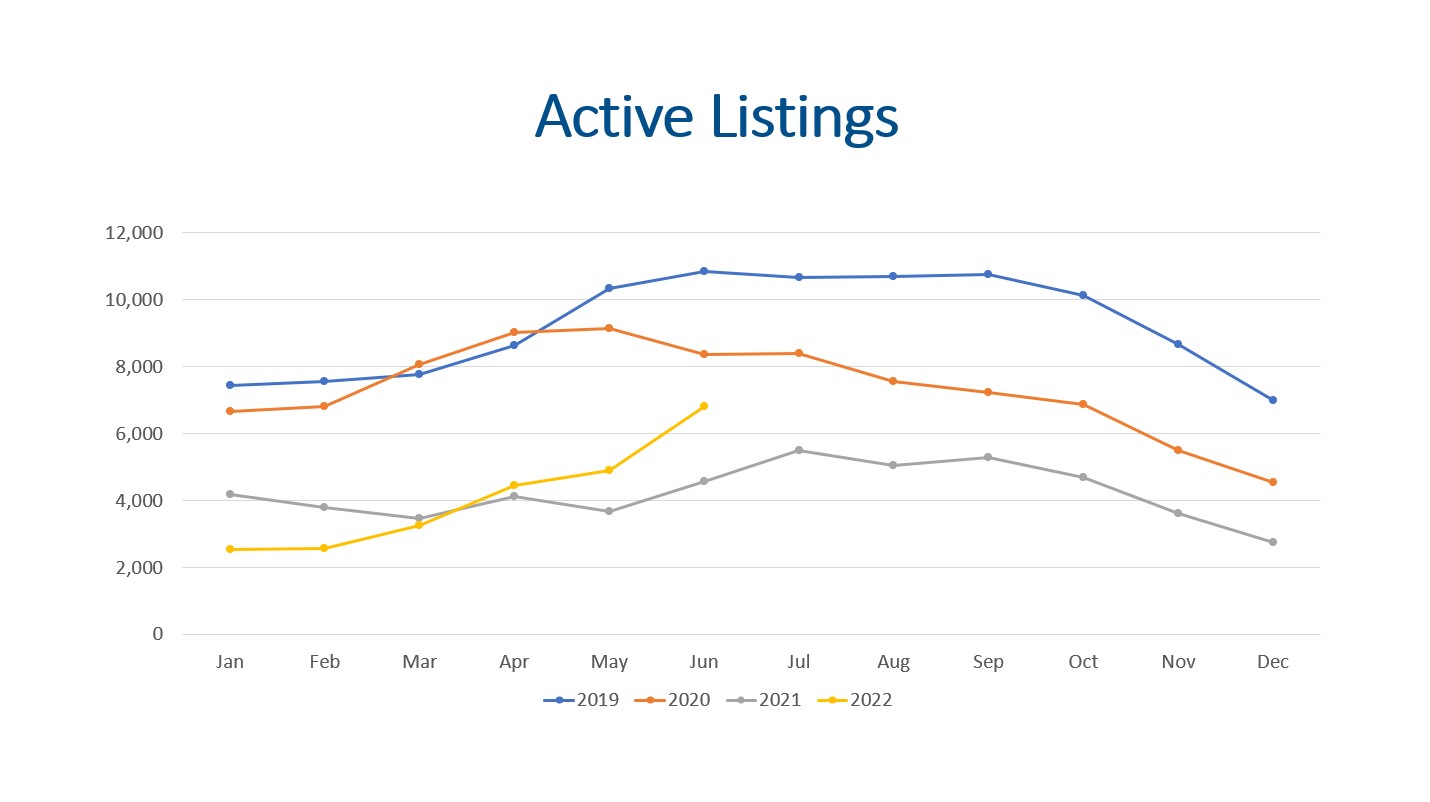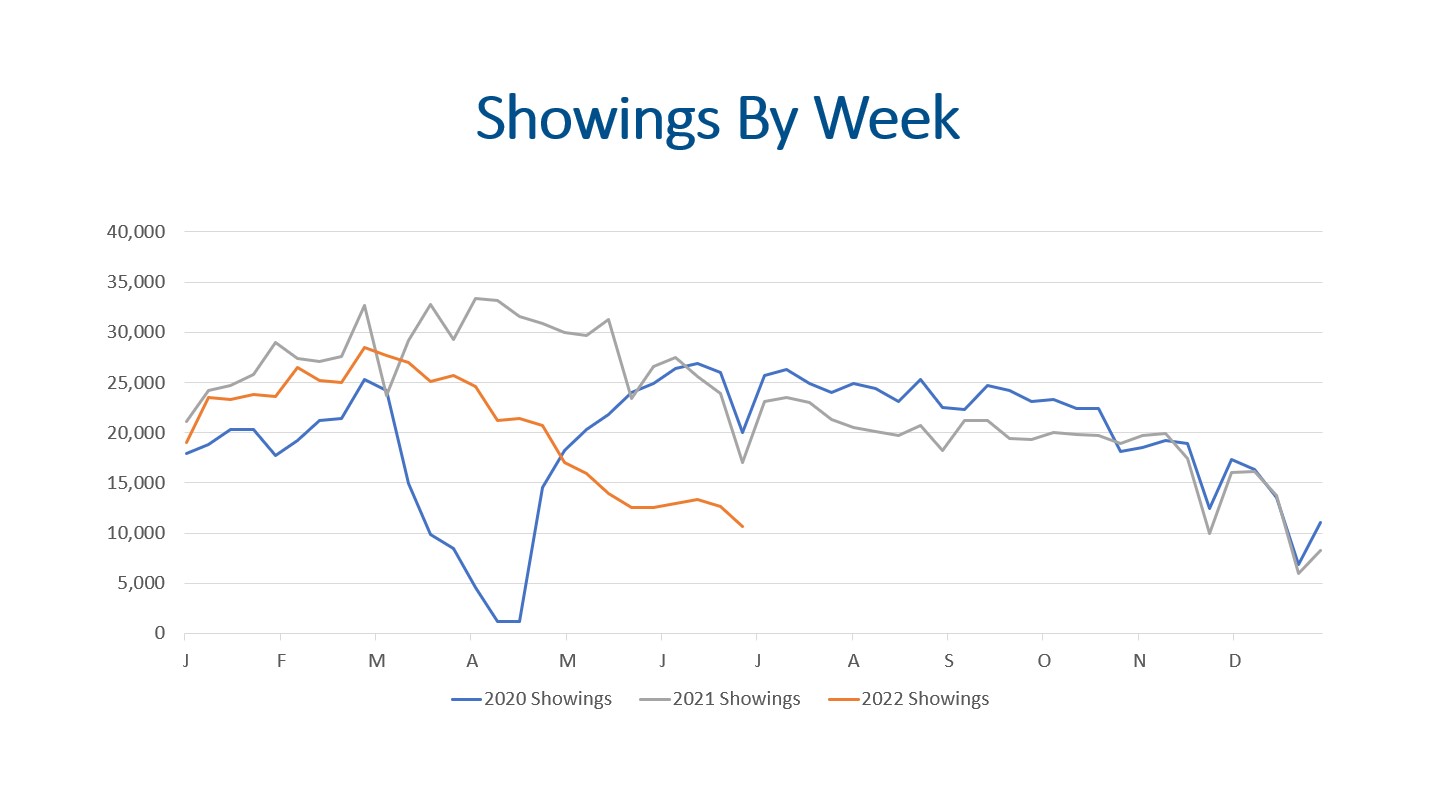
The residential real estate market is undergoing some stress testing. By that I mean, the real estate market is being tested by changes. Typically, the term “stress testing” is reserved for how your heart handles physical exercise. Alternatively, “stress testing” is used in the financial industry to help gauge investment risk and proper capitalization.
Last month, we reported the 30-year mortgage rate at the end of May was 5.1%. The 30-year mortgage rate increased to 6% by the end of June and has since come down to around 5.6% half way through July. Higher interest rates are having an impact on the market as some buyers have put their search on hold.
Let’s take a look at the latest market trends for the residential real estate market in Denver through: Supply, Demand, Sales Prices, and Months of Inventory for June 2022.
Supply
We saw 7,795 new listings during June 2022. This is 904 additional new listings when compared to June 2022 and is 61 listings less than June of 2021.
When we look at the total amount of active listings at the end of the month, we had 6,825 active listings. This is up 49.5% compared to the record low of 4,566 listings in June 2021. Although this is a significant year over year change, we are still (18%) lower than 2020 and (37%) lower than 2019.
 Year to date detached single-family home construction starts were up 31.9% for January to March when compared to 2021; however, the decline in starts for April and May has brought the increase down to 2.4% for the year. It is important to note that year to date housing starts for 2022 are up 36.7% from the same period in 2020.
Year to date detached single-family home construction starts were up 31.9% for January to March when compared to 2021; however, the decline in starts for April and May has brought the increase down to 2.4% for the year. It is important to note that year to date housing starts for 2022 are up 36.7% from the same period in 2020.
All in all, supply for residential homes for sale is still low but it is getting closer to normal.
Demand
The average total showings for June during 2019, 2020, 2021 was 104,827. June 2022 had 57,016 showings (roughly 54% of what we should have)! May 2022 had 66,126 total showings. Showings have declined because of the higher mortgage rates, high inflation, and uncertainty in the market.
 We saw 4,782 properties go under contract in June 2022. This is a (21.2%) decrease compared to May 2022 and a (15.6%) decrease compared to June 2021.
We saw 4,782 properties go under contract in June 2022. This is a (21.2%) decrease compared to May 2022 and a (15.6%) decrease compared to June 2021.
There were 5,184 closings in June 2022 compared to 5,654 in May of 2022. This is a (8.3%) decrease month over month. Compared to the 6,481 closings in June 2021, this is a (20%) decrease in closing volume. Year to date, there have been 27,418 closings compared to 29,723 closings in 2021. This represents an overall decline in closings of (8.7%). The same period in 2019 had 26,696 closings, so we are a head of that by 1.7%.
The median days on market for June 2022 remained at 5 days, so half of the homes sold within 5 days even with the decline in closings! The average days on market is 12 days.
All in all, we still have showings, contracts, closings, and the median days on market are all indicate we are all good measures of demand.
Sales Price
The median sales price for the residential market for June was $606,000. This is down slightly from the median sales price of $615,000 in April. This includes detached homes, condos, and town homes.

If we look just at detached homes, the median sales price was $665,000. This represents a 10.8% YOY increase.
Most of the year has seen year over year increases of 18-21%. With June of 2022 houses, condos, and townhomes coming in at 12.2%, the rate of appreciation is slowing. I expect that we will return to the long-term average of 6% by the end of the year.
Months of Inventory
The months of inventory is still one of the best indicators to watch for market trends. A seller’s market has 0-3 months of inventory. A balanced market has 4-6 months of inventory, and 7+ months of inventory is a buyer’s market. In a seller’s market prices go up, and in a buyer’s market prices go down.
With 6,825 listings on the market and 5,184 closings, we have 5.64 weeks of inventory. This is up from 3.7 weeks of inventory in May 2022.
Final Thoughts
In conclusion, supply, demand, sales prices, and months of inventory are all important key performance indicators monitoring closely. Supply is still a problem for Denver Residential Real Estate but it is getting a lot better. Demand is good but not as strong as it was. Higher interest rates, high inflation, and uncertainty in the economy is slowing showings and new contracts. The 30-year mortgage interest rate at the end of June was 6.0%. Lastly, with 5.6 weeks of inventory, home appreciation will likely slow in the second half of 2022, and we expect to see them back in the single digits by the end of the year.
Here is a link to the full presentation: